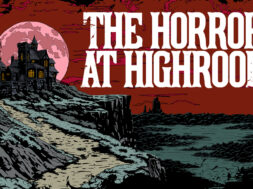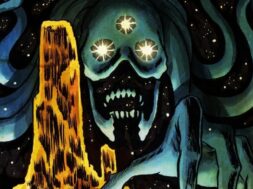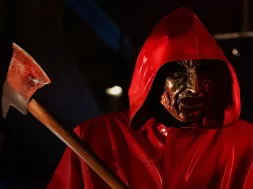It wasn’t until 2015 that the Goosebumps franchise exploded onto the big screen, but as you might imagine, Hollywood had been trying to figure out a way to bring R.L. Stine‘s iconic characters and stories to life for quite a long while prior to that. Tim Burton was at one point attached to direct an adaptation, and George A. Romero even took a crack at a script.
This week, the University of Pittsburgh Library System’s Horror Studies branch unearthed that script from the George Romero Archive, and they’ve shared some details over on their site.
As the team explains, Romero’s take on Goosebumps was to adapt the very first book in Stine’s series, titled Welcome to Dead House. Naturally, it was to be a zombie story…
“The Stine book is set in a town called Dark Falls whose inhabitants are, secretly, the living dead. When the Benson family moves in, young Josh and Amanda discover that a flashlight beam is sufficient to crumble the town’s residents into dust. Every year, the town must feed on the blood of a new family to sustain their undead existence.”
“Romero retains the basic scenario and all of the major character names but tweaks the story in revealing ways. In the Stine book, the zombification comes, a la Return of the Living Dead, because of a mysterious gas that escapes from a local factory. Romero makes the capitalistic origins more emphatic: the town patriarch, the wealthy Foster Devries, has in death possessed the town. The state of living death experienced by the residents stemmed from a supernatural power that Devries has now shared with/imposed on the town.”
The team goes on to explain that the house is Romero’s story is “undead, as it is possessed by Devries’ spirit. Devries/the house feeds off its inhabitants, sucking out their energy until they die, after which they are revived to join the rest of the undead in the town.”
The write-up further details, “Romero’s nightmarish scenario here involves not being killed and eaten but, rather, essentially having an awful, soul-killing job.”
Head over to the University of Pittsburgh Library System’s Horror Studies website to learn a whole lot more about Romero’s Goosebumps, which was laced with social commentary.
The George A. Romero Archival Collection was acquired by the University of Pittsburgh in 2019, and the team has been hard at work on preserving lost gems from Romero’s career.










